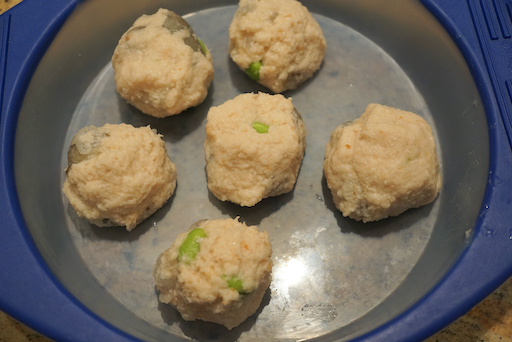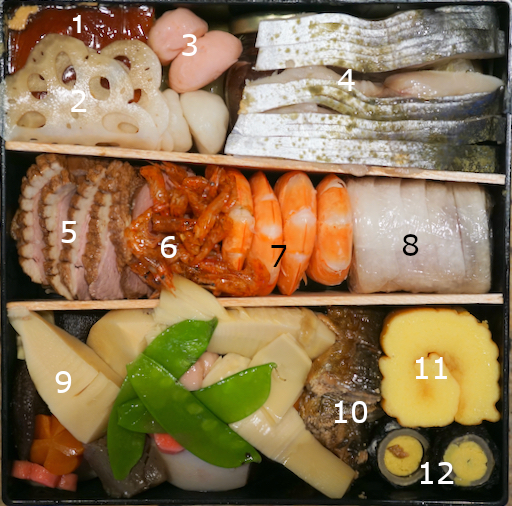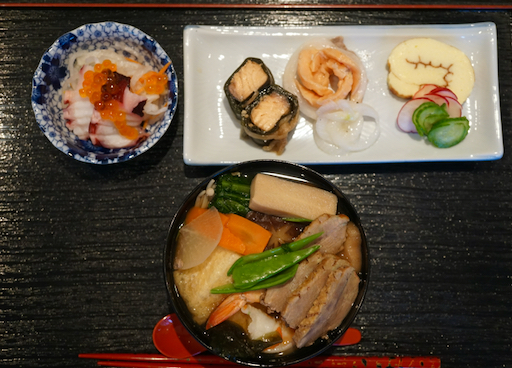My Wife decided to make these muffins because she had made some ricotta cheese and wanted to use it before it went bad. (How the cheese was made is for a future post). These are very good breakfast muffins. They are more hearty than sweet. The combination of cheese and bread is very pleasing. The cheese has a nice lemon flavor. I saw her working on these buns and it looked very tedious to me with multiple steps. When it comes to baking bread, I am in the school of the simpler the better like
no-knead breads. So I am grateful my wife is of the tedious multi-step school.
My wife likes buns or muffins which have various kinds of filling but some times the moisture in the stuffing makes
a gaping space above the filling. As a result of this recipe she learned that an indentation on the top of the dough then filled with the top open, will circumvent this problem. As you can see below, there is no gaps between the buns and the filling.
Ingredients:
for dough
1 cup whole milk
10 Tbs. butter melted
1 large egg plus 2 egg yolks
3 1/2 cups (496 gms) AP flour
1/3 cup (56.7 gms) sugar
2 1/4 tsp yeast
1 1/2 tsp salt
for filling6 oz. (170 gms.) cream cheese softened
6 oz. (170 gms) ricotta cheese
3 Tbs. sugar
1 Tbs. AP flour
zest of one lemon
1/2 tsp. lemon flavoring
1 tsp. vanilla
Directions:
For the dough: Whisk milk, eggs, and butter together. Whisk flour, sugar, yeast and salt together in the bowl of a stand mixer fitted with a dough hook. Slowly add the wet ingredients to the dry ingredients until fully incorporated. Increase speed and knead for 8 to 12 minutes. Transfer to a bowl and lightly coat surface with vegetable oil. Cover and allow dough to rise until doubled.
For the filling: Cream the cream cheese with the sugar, flour, lemon zest and flavorings. Add the ricotta cheese and mix until fully combined.
Measure out the individual amount of filling to use for each muffin so the filling is distributed completely and evenly. These calculations are for this batch of bread. Each batch may have different final weights so each batch should be weighed independently. I wanted muffins that were about 50 gm size. The total dough weighed 1020 gm/ 50gm = 20 pieces. The total weight of the filling was 452 gm/20 pieces = 22.6 gm/piece. Measure out and set aside.
Assembly: After dough has risen punch down. Divide dough according to weight (in this case 50 gm) and form into rolls. Place the rolls on a parchment lined baking sheet. Allow to rise until doubled in size. Using the bottom of a glass or cup slowly press down on the center of the muffin until the cup touches the sheet. (#1 and #2). (BTW, my wife used
a very special hand-made very thin-walled porcelain Japanese sake cup for this because she said the size and shape were just right. Meanwhile I held my breath hoping it would survive its application to this purpose).
To prevent sticking dip, the cup in some flour. Beat 1 egg with 1 Tbs. milk. Brush the dough, including the indentation with the egg wash. Take the pre-measured cheese pieces and place in the indentation of the dough. Smooth out with a spatula (#3).
Bake in a 350 degree oven for about 25 minutes or until golden brown (#4).
These are very nice muffins. They are definitely not a "danish"-- they are not too sweet. The bread has a nice firm texture. The cheese mixture goes nicely with the flavor of the bread. The lemon flavor of the cheese really comes through adding a pleasant burst of fresh tartness.





























